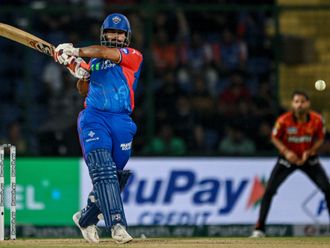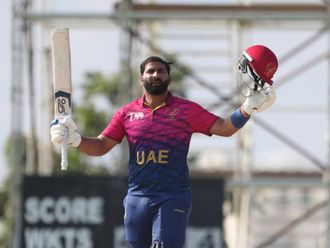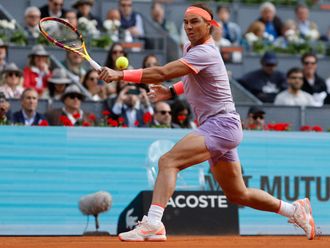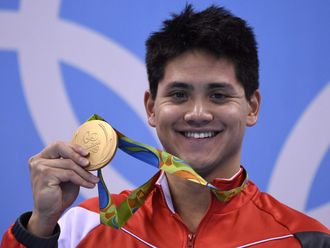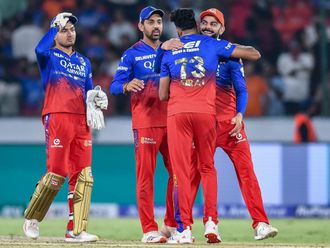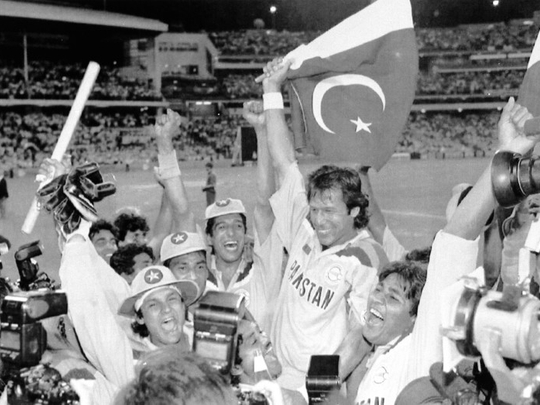
The World Cup is easily the biggest cricket tournament, though in recent years the Indian Premier League threatened to not just steal its thunder but also exceed it in fiscal heft.
Talking of finance and the World Cup’s growth from its first edition in 1975, some figures will help explain the phenomenon better. For instance, the total outlay for the first tournament, put up by insurance giants Prudential, was £100,000 (Dh559,925). Yes, you’ve read that right. The winner got £4,000, the loser £3,000 and the losing semi-finalists £1,000 each.
By contrast, the total outlay for the 10th edition — beginning today — is $11.5 million (Dh42.24 million) and the winner takes a whopping $4.3 million with the loser getting $2 million!
The biggest trigger in this astonishing growth is India’s rise to eminence (on the field too, but more pertinently as a burgeoning economic power) in the past two decades. Once the Indian economy opened up in 1991, cricket never looked back.
But while everybody knows the genesis of India’s rise is in the spectacular victory in 1983, not many might know how the hegemony of the old order was broken and the World Cup was shifted out of England in 1987.
N.K.P. Salve, the then president of the Board of Control for Cricket in India (BCCI) at that time, was spurned by the MCC for some tickets he needed. So, even while celebrating India’s triumph over the West Indies at Lord’s on June 25, 1983, his mind was working towards retribution for the ‘insult’.
Over reduction
To challenge the status quo, BCCI found supporters within the ICC on the promise of greater and equitable distribution of profits if the World Cup came to the sub-continent. But the shift from England would have been impossible without the robust support of the Pakistan Cricket Board (PCB).
While the two countries were often at loggerheads in the political arena, India and Pakistan were united in countering the dominance of England, Australia and their bloc in the ICC.
To cut a long story short, India and Pakistan bid for the 1987 tournament jointly. By raising the guarantee money for all participating countries by 50 per cent, dissent within the ICC was scuttled. The ICC was also convinced to reduce the number of overs to 50 each side to suit the sub-continent. After three tournaments (in 1975, ‘79 and ‘83) the World Cup had set sail out of England. Hereafter, it would now be played all over the cricket universe on a rotational basis. The shackles of authoritarianism had been broken. Cricket had finally been democratised.
By 1991-92, the World Cup had gone Down Under, the Trans-Tasman cousins Australia and New Zealand hosting the tournament. This has particular relevance in the current context as these two countries host the tournament this year too. Of course, the prize money has gone up manifold and the field is also larger with 14 teams competing.
Though 23 years have passed since the 91-92 World Cup, that tour brings back vivid memories. Like the Indian team then (and now), I was away from home for almost five months.
The cricket was riveting. Where India was concerned, the coming of age of Sachin Tendulkar in the Test series against Australia (where he scored two centuries) had been the big talking point till the World Cup began. But thereafter, it was all about which team could win.
The return of South Africa to the fold after more than two decades in the wilderness had given the tournament an X-factor. Just how good was this team, now led by Kepler Wessels, who had also played for Australia in an earlier avatar and including stars like Allan Donald, Peter Kirsten, Jonty Rhodes and Hansie Cronje among others who had been in splendid form? However, defending champions Australia started as favourites. Allan Border’s side had matured since the 1987 triumph. Apart from the captain himself, they were flush with match-winners in David Boon, Dean Jones, the Waugh brothers, Craig McDermott. Moreover, they were playing at home, in conditions that suited them, in front of their supporters.
As it turned out, this World Cup became the story of two unfancied teams — New Zealand and Pakistan — who played in contrasting styles with vastly different tactics before meeting each other in the semi-final.
Under Martin Crowe, New Zealand came like a gale force, beating favourites Australia first up to give the tournament an early quirk. Crowe was in sublime form with the bat, but perhaps more impressive as captain, deploying Mark Greatbatch as pinch-hitting opener to devastating effect and more often than not using off-spinner Dipak Patel to open the bowling.
Pakistan, on the other hand, were sluggishness defined; slow to start and barely managing to hang in despite some serious setbacks, none bigger than the defeat to India at Sydney. Javed Miandad’s ‘monkey’ jumps to taunt Kiran More are now an iconic piece of cricket broadcast, but the loss to India was a body blow to Pakistan’s morale.
Luck factor
Luck played a big part in Pakistan surviving an even bigger defeat against England. Bowled out for 72 in daunting batting conditions, it seemed Pakistan’s participation in the World Cup was over. But with England needing only 39 runs to win in seven overs with nine wickets remaining in a rain-reduced match, the skies opened up just in time to force abandonment.
The one point they got from this game gave Pakistan a foothold, which they were to exploit brilliantly thereafter. The team was suddenly awakened to the possibility of making it to the semi-finals, and the performances perked up.
Imran Khan also revised his strategy to shore up the vulnerable batting by going higher up in the order and hold the innings together with maestro Javed Miandad. This turned out to be a decisive move. The semi-final line up included two teams that were expected to be there — South Africa and England — and two that had done the unexpected, New Zealand and Pakistan.
The semis, however, bucked all speculation. Pakistan discovered a new rising star in Inzamam-ul-Haq, whose blazing half century broke New Zealand’s resistance and the hearts of the country’s supporters. In the other game, South Africa, having done everything, were stymied by a sudden heavy shower when they were in sight of victory. There was a strong sentimental pitch to the final. Imran Khan, who had been raising funds for the past several years for a cancer hospital in memory of his late mother, made this match a cause celebre. At 38, Imran was a lion in winter. This was to be his last roar.
England had their moments, but Pakistan took better advantage of theirs. Imran himself played a solid captain’s knock to give his team a defendable total.
The turning point was a superb spell by Wasim Akram who removed Allan Lamb and Chris Lewis off successive deliveries. It was the defining moment of Akram’s career. Pakistan, no hopers midway through the tournament, pulled off a stunning win, leaving England as bridesmaid yet again.
So what does the World Cup hold out this year? Fans can expect some extremely competitive cricket, what with the gap between teams narrowing considerably over the past few years. Also, more uninhibited strokeplay by batsmen. A.B. de Villiers scoring a 149 off just 44 deliveries may not be matched, but is a taste of things to come.
Given the conditions in Australia and New Zealand, sides with strong bowling attacks find favour with experts. This is where defending champions India have their task cut out as bowling has been the weak spot.
Because of their bowling strength, Australia and South Africa are the strongest claimants for the title according to several former players. However, history suggests that after 1979, the World Cup has never traversed the logical path.
In my opinion, therefore, fans would do well to follow this motto: Expect the unexpected!
— The writer is a senior cricket journalist and editor based in India




